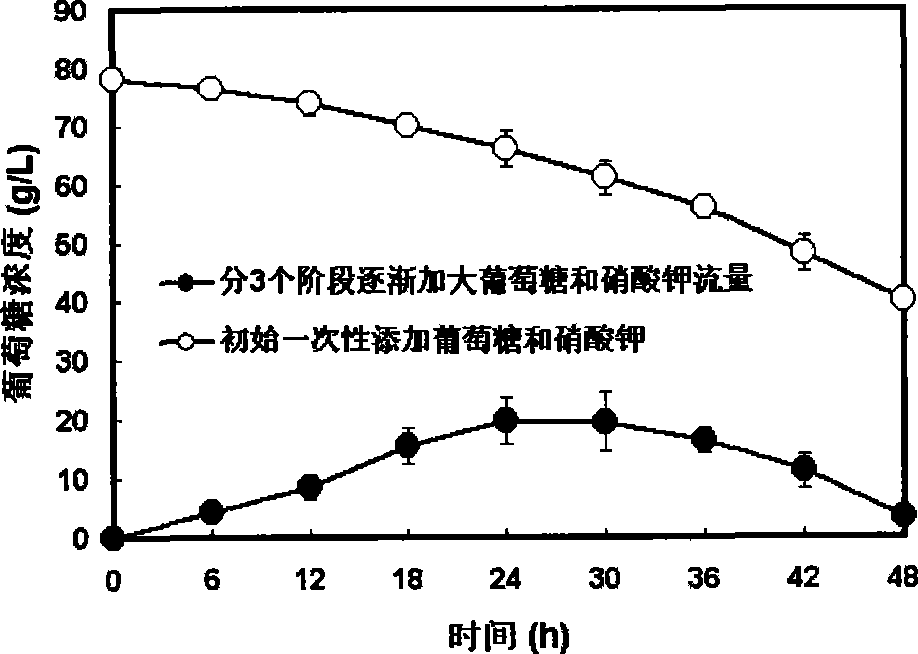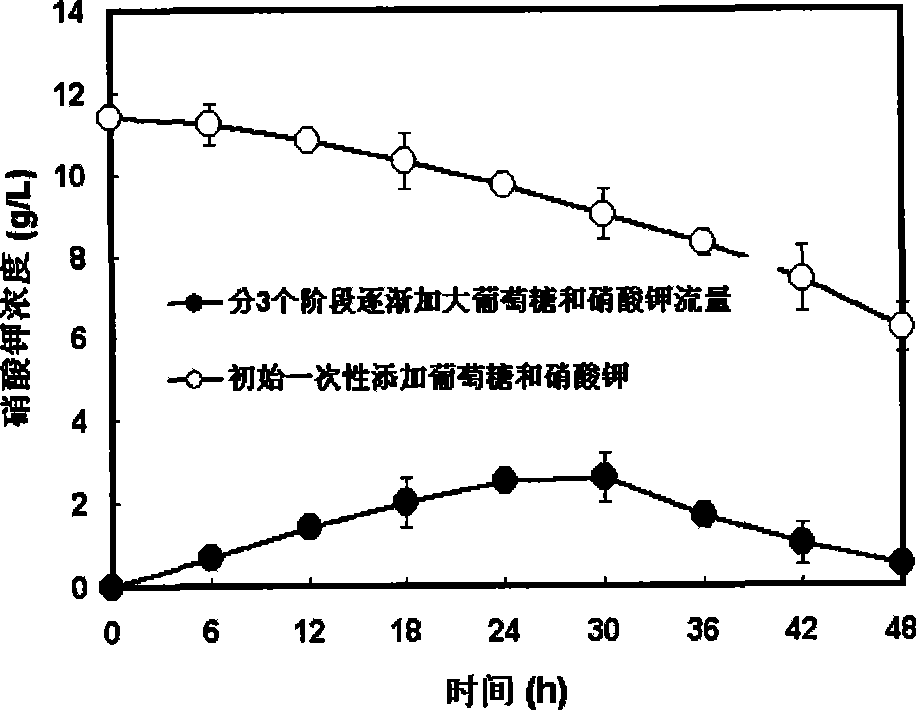Method for cultivating chlorella by heterotrophic nutrition fermentation
A technology of fermentation culture and chlorella, applied in the biological field, can solve problems such as high algal biomass, and achieve the effect of important application prospects and development value
- Summary
- Abstract
- Description
- Claims
- Application Information
AI Technical Summary
Problems solved by technology
Method used
Image
Examples
Embodiment Construction
[0013] 1. Chlorella medium: prepare 20 liters of medium, composition (1.0L deionized water): KH 2 PO 4 3.0g, MgSO 4 ·7H 2 O 2.0g, NaCl 1.0g, NaHCO 3 0.2g, CaCl 2 10.0mg, FeSO 4 5.0mg, ZnCl 2 5.0 mg, MnCl 2 4H 2 O 5.0mg, CuCl 2 1.0mg. If the one-time addition of glucose and potassium nitrate is adopted, 78g / L glucose and 11.3g / L potassium nitrate (mass ratio of carbon and nitrogen is 20:1) are added to the culture medium; In another 5-liter glass bottle, prepare 2 liters of feed solution, which is composed of (1.0L deionized water): 800g glucose, KNO 3 115g (the mass ratio of carbon and nitrogen is 20:1). Both the culture medium and feed liquid were sterilized at 121° C. and 0.11 MPa high pressure for 20 minutes. After the temperature of the medium was lowered to 30° C., Chlorella species were inoculated for heterotrophic fermentation.
[0014] 2. Heterotrophic fermentation culture conditions of Chlorella: 50 liters of fully automatic fermentation tanks were ...
PUM
 Login to View More
Login to View More Abstract
Description
Claims
Application Information
 Login to View More
Login to View More - R&D
- Intellectual Property
- Life Sciences
- Materials
- Tech Scout
- Unparalleled Data Quality
- Higher Quality Content
- 60% Fewer Hallucinations
Browse by: Latest US Patents, China's latest patents, Technical Efficacy Thesaurus, Application Domain, Technology Topic, Popular Technical Reports.
© 2025 PatSnap. All rights reserved.Legal|Privacy policy|Modern Slavery Act Transparency Statement|Sitemap|About US| Contact US: help@patsnap.com



